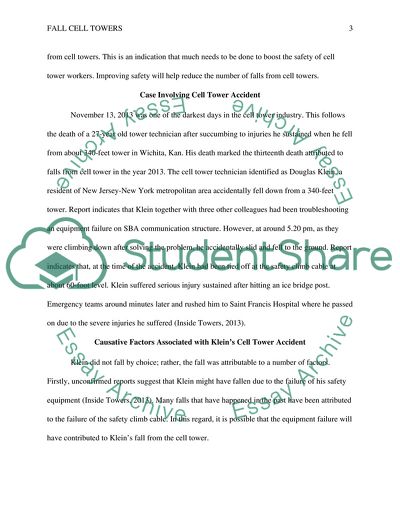Cite this document
(Fall Protection and the Communication Tower Industry Term Paper Example | Topics and Well Written Essays - 1250 words, n.d.)
Fall Protection and the Communication Tower Industry Term Paper Example | Topics and Well Written Essays - 1250 words. https://studentshare.org/engineering-and-construction/1806511-fall-protection-and-the-communication-tower-industry
Fall Protection and the Communication Tower Industry Term Paper Example | Topics and Well Written Essays - 1250 words. https://studentshare.org/engineering-and-construction/1806511-fall-protection-and-the-communication-tower-industry
(Fall Protection and the Communication Tower Industry Term Paper Example | Topics and Well Written Essays - 1250 Words)
Fall Protection and the Communication Tower Industry Term Paper Example | Topics and Well Written Essays - 1250 Words. https://studentshare.org/engineering-and-construction/1806511-fall-protection-and-the-communication-tower-industry.
Fall Protection and the Communication Tower Industry Term Paper Example | Topics and Well Written Essays - 1250 Words. https://studentshare.org/engineering-and-construction/1806511-fall-protection-and-the-communication-tower-industry.
“Fall Protection and the Communication Tower Industry Term Paper Example | Topics and Well Written Essays - 1250 Words”. https://studentshare.org/engineering-and-construction/1806511-fall-protection-and-the-communication-tower-industry.


